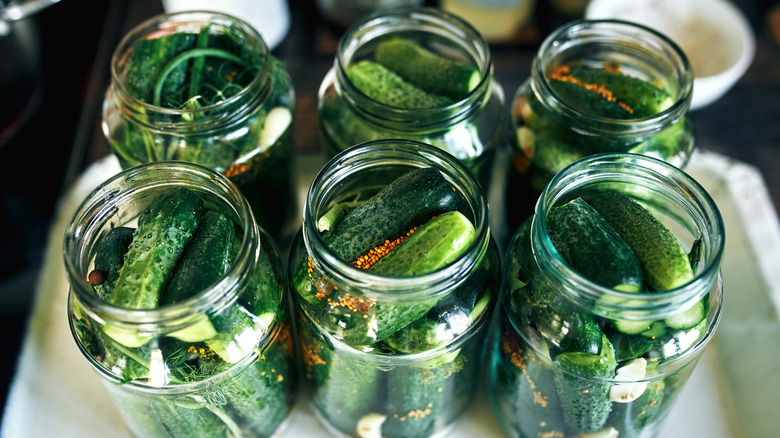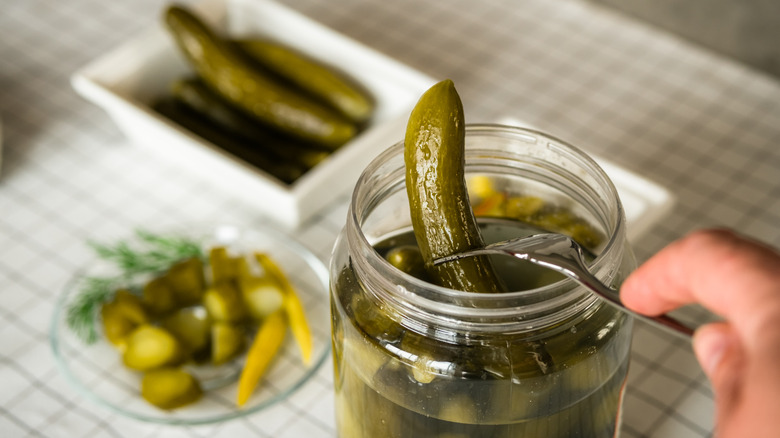What Makes Pickles Fresh Packed?
Kosher, dill, gherkin, bread and butter, sour — there's no shortage of variety when it comes to pickles. When learning about the science and process of pickling, you'll see that there's not just one way to approach it. Each pickle follows its own process, and one popular method to make pickles is fresh packing.
Fresh packed pickles, also called quick process pickles, do not go through a fermentation process. Instead, once cucumbers are placed in a jar, a hot pickling liquid made from vinegar, water, salt, and any desired spices is poured over them. They do not sit out to age or ferment, but instead go through a canning process, like a low-temperature pasteurization treatment or a boiling-water canner to make them shelf-stable. Another way to make fresh packed pickles is by covering the cucumbers in brine (a mix of salt and water) for a few hours or overnight, pouring out the brine, and then following the previous steps. If making them at home, know that the flavors become more developed after a few weeks.
Sometimes you'll see "fresh packed" labeled on pickle jars in the grocery store, but not always — this phrase is mostly reserved for home picklers to differentiate from the fermentation method. However, the shelf-stable pickles in grocery stores are fresh packed, as they are not sold refrigerated and don't go through a fermentation process. These have also been heat-pasteurized so they can be stocked safely on the aisle without refrigeration.
How do fresh packed pickles compare to other styles?
Another way to make pickles is by fermenting the cucumbers in salt and water brine in large, unrefrigerated tanks for up to several weeks. Compared to fermented pickles, fresh packed pickles tend to have a crunchier texture; the fermentation process can cause food to become softer. (Interestingly, Chowhound's least favorite pickle brand, Bubbies Kosher Dill Pickles, is fermented, and what we didn't like was the soft texture.) Fermented pickles can be considered a probiotic, and are characterized by their intriguingly funky, sour flavor. Comparatively, fresh packed pickles are not probiotic because no live cultures are present, and they taste and look — as far as color goes — more like fresh cucumbers.
When brine is poured over the cucumbers and transferred to the fridge immediately without the fermentation or canning process, these are called refrigerated pickles. They're ready to eat after about 24 hours in the fridge and will only last about a month. In terms of flavor, fresh packed and refrigerated pickles are going to taste similar, but refrigerated pickles may have more of a fresh cucumber flavor, while fresh packed will be a bit stronger in terms of vinegar and spices. Fresh packed pickles are crisp, but refrigerated pickles are even more crispy and crunchy. Regardless of what method you're using, the pickles' consistency really does come down to the cucumber — if using any of these methods at home, be sure to choose the right cucumber for the crunchiest texture!
If you're wondering how store-bought pickle brands stack up, our two favorite brands were actually refrigerated pickles, and our third choice was a fresh packed pickle, Famous Dave's Spicy Dill Pickle Chips. So it's worthwhile to try out different types of pickles; each has its own appeal.

